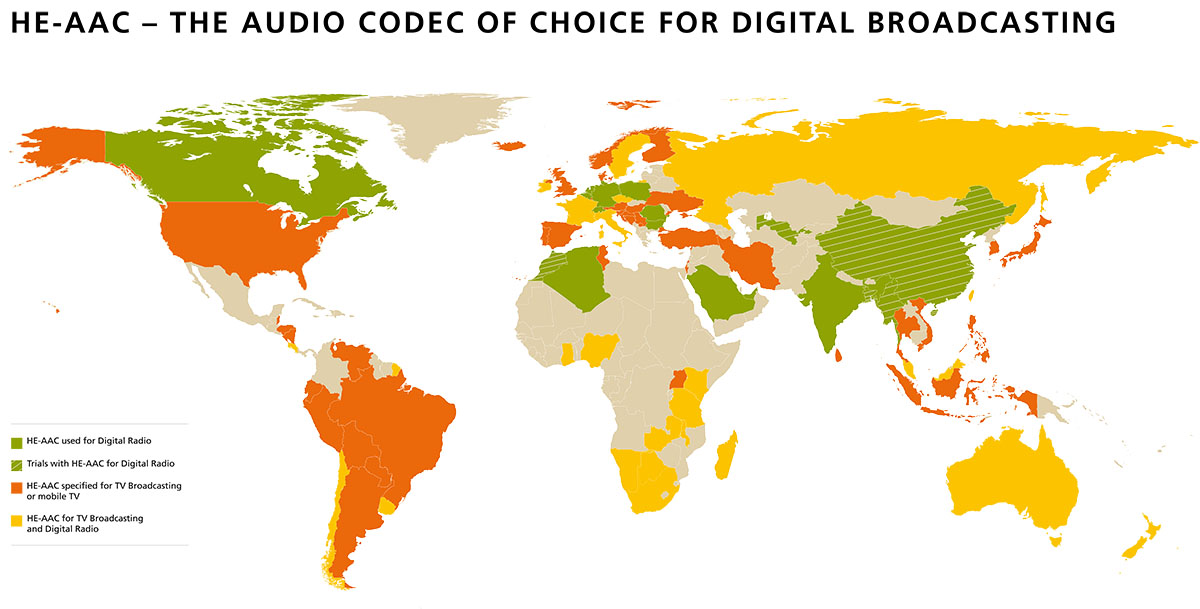Established world-wide for TV broadcast and streaming applications
Over the last couple of years, HE-AAC has become one of the most important enabling technologies for state-of-the-art multimedia systems. Thanks to its unique combination of high quality audio, low bit rates and audio-specific metadata support, it is the perfect audio solution even over channels with limited capacity, such as those in broadcasting or for adaptive streaming standards such as MPEG-DASH.
HE-AACv2 is the mandatory stereo codec in the DASH264 Interoperability Guidelines developed by the DASH Industry Forum. HE-AAC 7.1 has also been selected as one of the optional multichannel codecs.
HE-AAC is…
- ... used in TV, radio, and streaming worldwide.
- ... in more than ten billion devices already today.
- ... fully compatible with all relevant broadcast metadata.
- ... supported and maintained by Fraunhofer IIS.
Quality |
excellent, according to EBU test (for complete results see whitepaper below) |
Bit rates |
HE-AAC: 48 to 64 kbit/s Stereo, 160 kbit/s for 5.1 Surround (HE-AAC: AAC-LC + SBR) HE-AAC v2: 24 to 32 kbit/s Stereo (HE-AACv2: AAC-LC + SBR +PS) for good quality audio |
Sampling rates |
24 to 96 kHz |
Channels |
mono, stereo, multichannel (e.g. 5.1, 7.1, ...) |
Used in |
DVB, ISDB , SBTVD, DAB+, DRM+, DRM, ATSC-M/H, ISDB-Tmm, DVB-H, DMB, 3GPP, mobile phones, audio and video streaming services |
